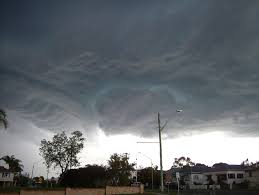[ad_1]
Published on : Friday, December 17, 2021

A powerful storm system swept through the central United States on Wednesday with high winds that kicked up dust storms, fueled wildfires and knocked down power lines, leaving more than 440,000 customers without electricity Thursday.
One person driving a truck died in Iowa when the vehicle was hit by a strong gust of wind, rolling it over and into a ditch, according to a state patrol crash report.
The unusual weather appeared to be fueled by record-breaking warm temperatures coupled with a jet stream that meteorologist Jeff Masters said took on a “very unusually contorted pattern.” It also came just days after devastating tornadoes in nine states left dozens dead.
The National Weather Service reported a tornado near Rochester in southeastern Minnesota, the state’s first on record in December. Several tornadoes reported in western and central Iowa also were December firsts for those parts of the state.
And a record was set Wednesday for the most hurricane-force winds of 75 mph or higher in a single day since 2004, according to the Weather Service.
In all, more than 36 million people in an area between New Mexico and Michigan were under high-wind warnings, as gusts of up to 100 mph sent roofs flying and toppled tractor-trailers on highways from Colorado to Iowa.
More than 340,000 customers were without power in Wisconsin and Michigan as of Thursday afternoon. About 37,000 were without power in Iowa, nearly 29,000 in Kansas and thousands in Illinois, Colorado, Nebraska, Missouri and Minnesota. Mid American Energy, which serves parts of Iowa, said that “because of the extensive damage,” restoring power could take as many as three days.
A lack of electricity in winter in those states normally risks leaving people without heat in freezing conditions, but cities across the Midwest reported record highs Wednesday. Parts of Iowa reached temperatures as high as 74, with the Chicago region nearing 70 the week before Christmas.
High winds in Kansas kicked up dust storms that caused low visibility, prompting the Kansas Department of Transportation to shut down major highways in the western part of the state.
Dry, windy conditions also fueled wildfires in Kansas, forcing evacuations. The Weather Service said late Wednesday that a wildfire in Russell County, Kan., was still burning. Parts of Kansas, Missouri and Colorado had the worst air quality in the country Wednesday evening, with Brownell, Kan., recording a “very unhealthy” air quality index of 237, far higher than levels earlier in the week. And in Nebraska, west of the cold front igniting the storms, blizzard conditions developed.
The sweeping storm system Wednesday came on the heels of the more vicious string of tornadoes that struck parts of the Midwest and South this past weekend, leaving at least 88 people dead and destroying thousands of homes and other structures.
Studying and determining the weather systems that triggered Wednesday’s devastating storms is likely to take months, but meteorologists told that a combination of factors, including unusually warm weather, were likely to blame.
A senior research scientist with the National Oceanic and Atmospheric Administration’s National Severe Storms Laboratory said he wouldn’t expect the recent stretch of devastating December weather to become the new normal in the United States calling the spate of extreme storms “somewhat freakish.”
Part of what made Wednesday’s anomalous storms so devastating is that they were continuing to mature and strengthen as they were battering the middle part of the country, said Victor Gensini, a meteorology professor at Northern Illinois University who specializes in extreme weather and climate.
The storms also wreaked havoc at airports. “For their safety,” Federal Aviation Administration employees were evacuated from an air traffic control tower at Kansas City International Airport, causing delays and diverting flights, the airport said. Runways reopened after FAA staffers returned to the tower and the airfield was checked for debris.
There were hundreds of delays and canceled flights at Denver International Airport on Wednesday, and several small planes that were parked were damaged at Santa Fe Regional Airport in New Mexico. A Christmas tree was toppled in the town square of a Denver suburb.
As millions of Americans’ lives have been upended by storms in the past week, meteorologists are warning many to take the weather seriously into account before Christmas.
Related Posts
Tags: Federal Aviation Administration (FAA), National Oceanic and Atmospheric Administration’s National Severe Storms Laboratory, National Weather Service

